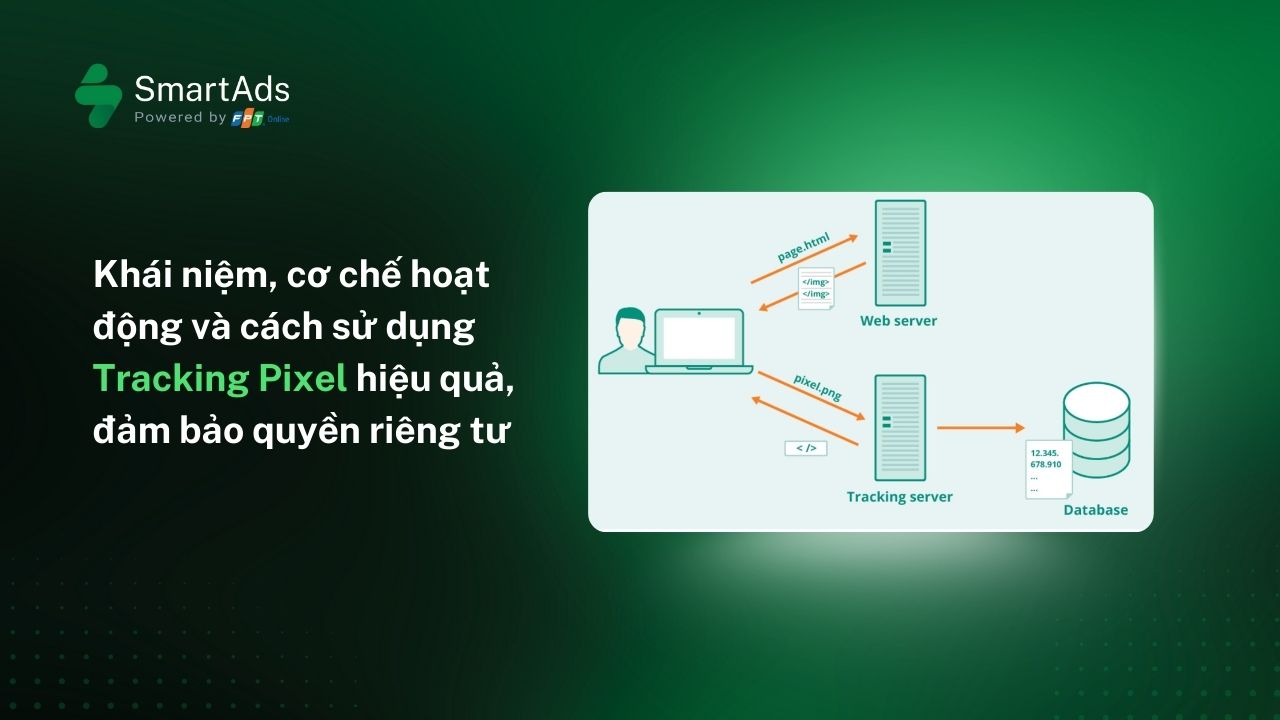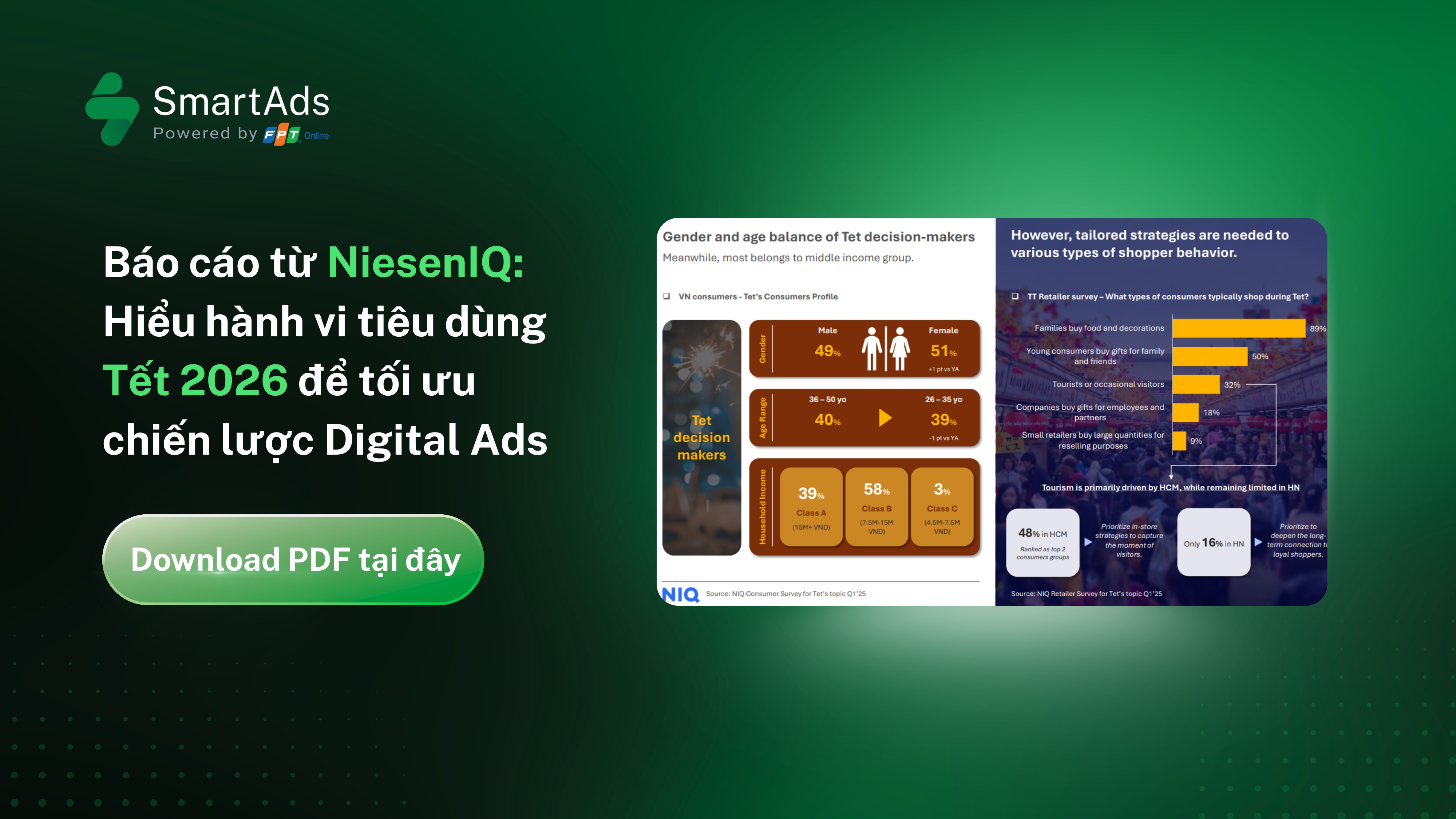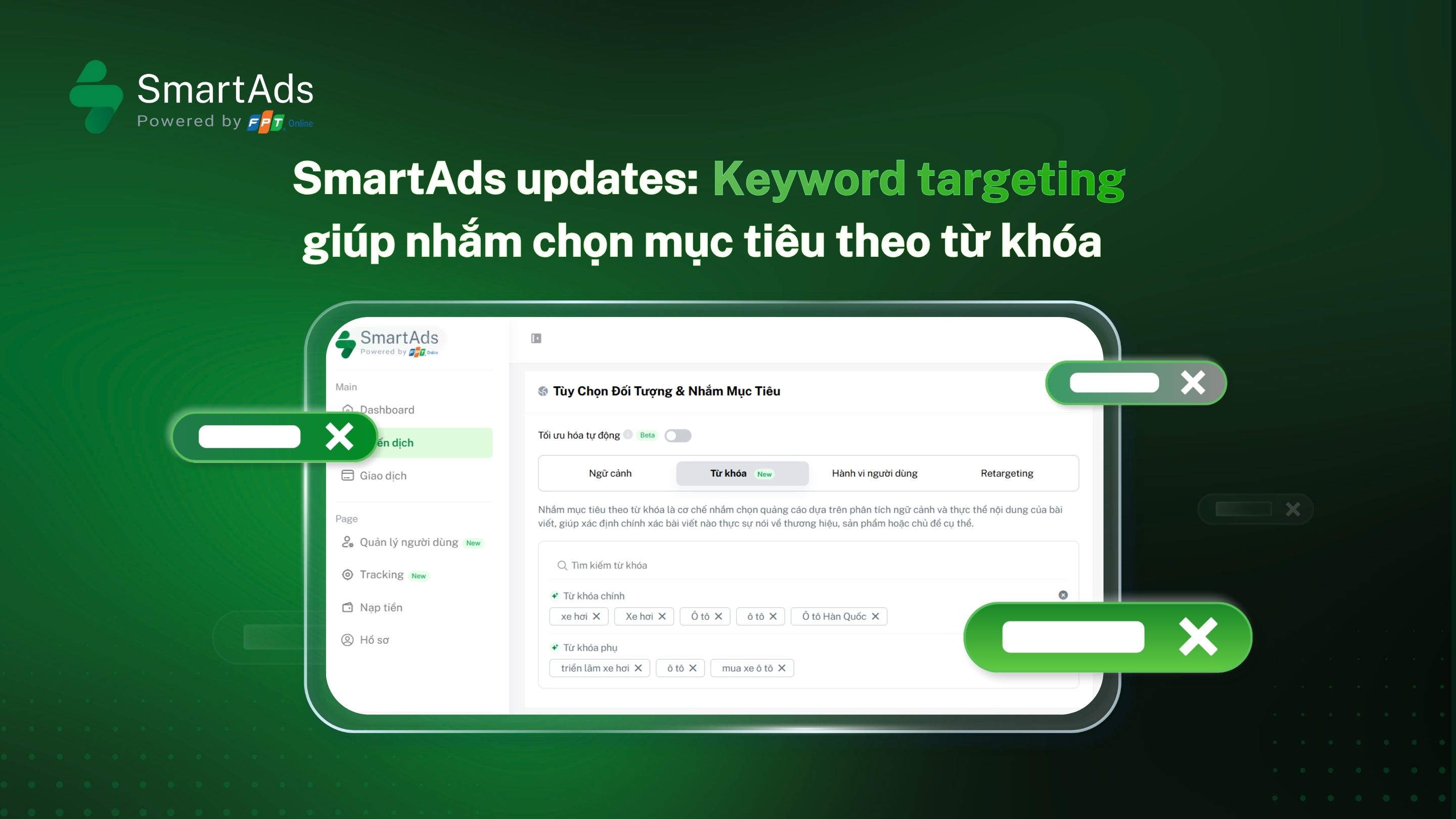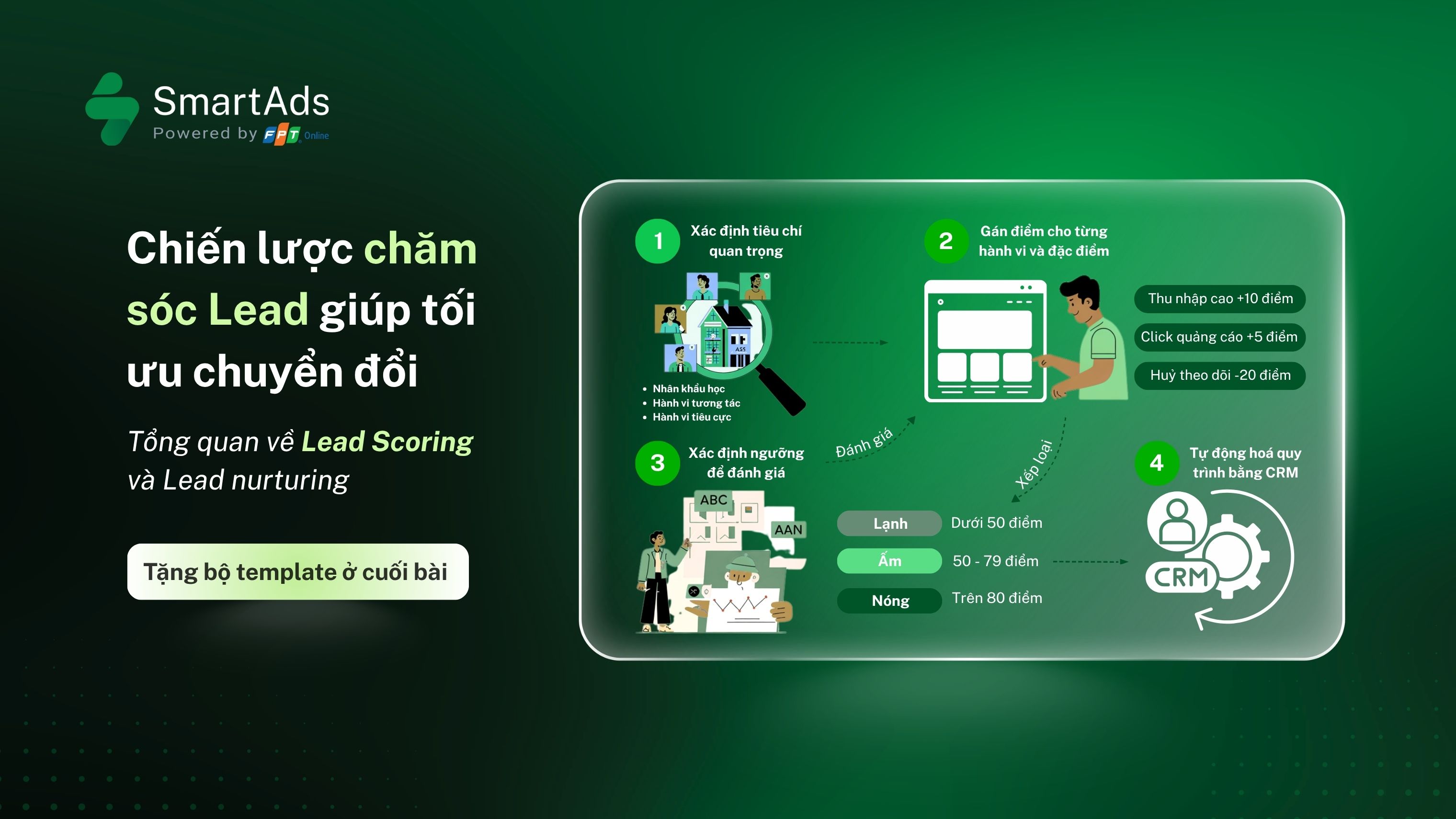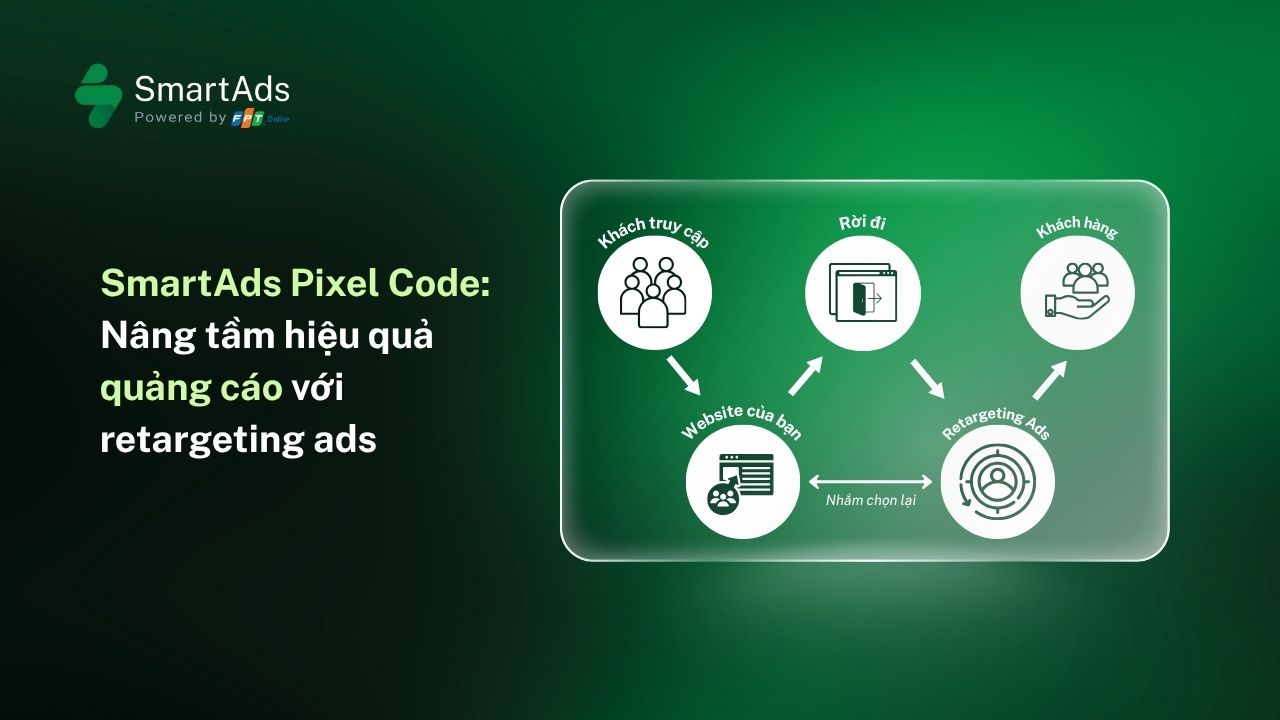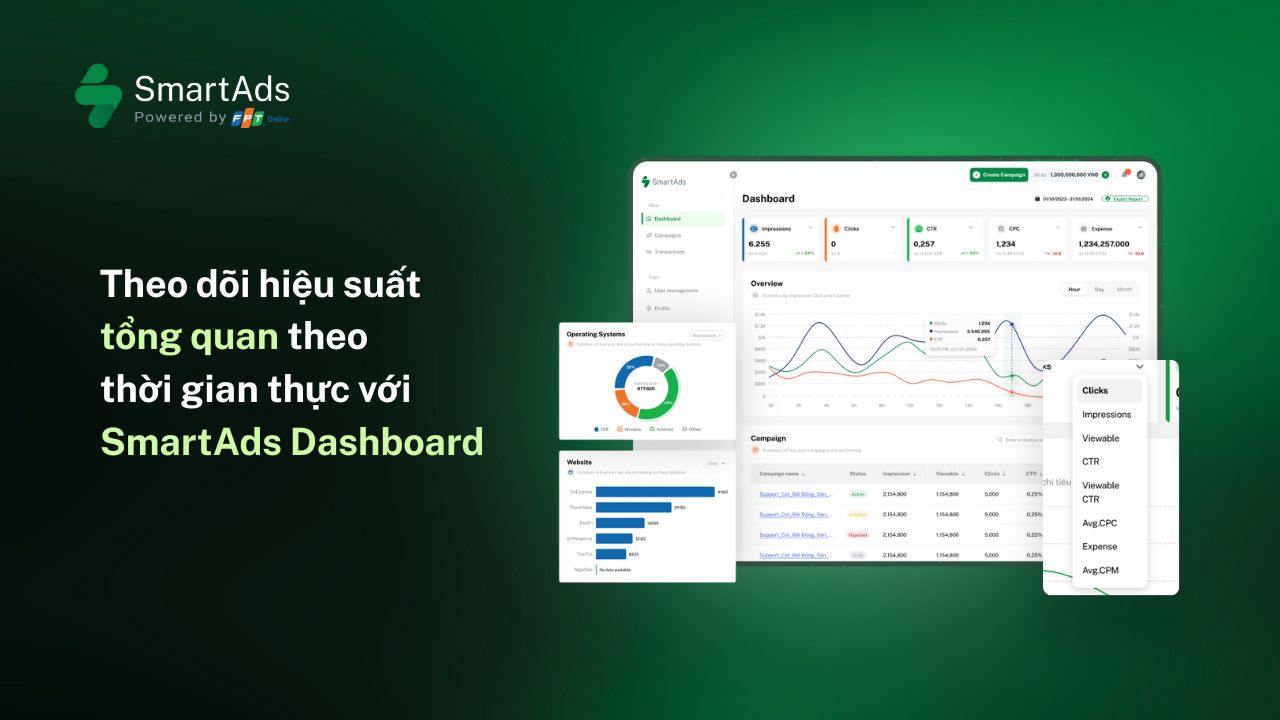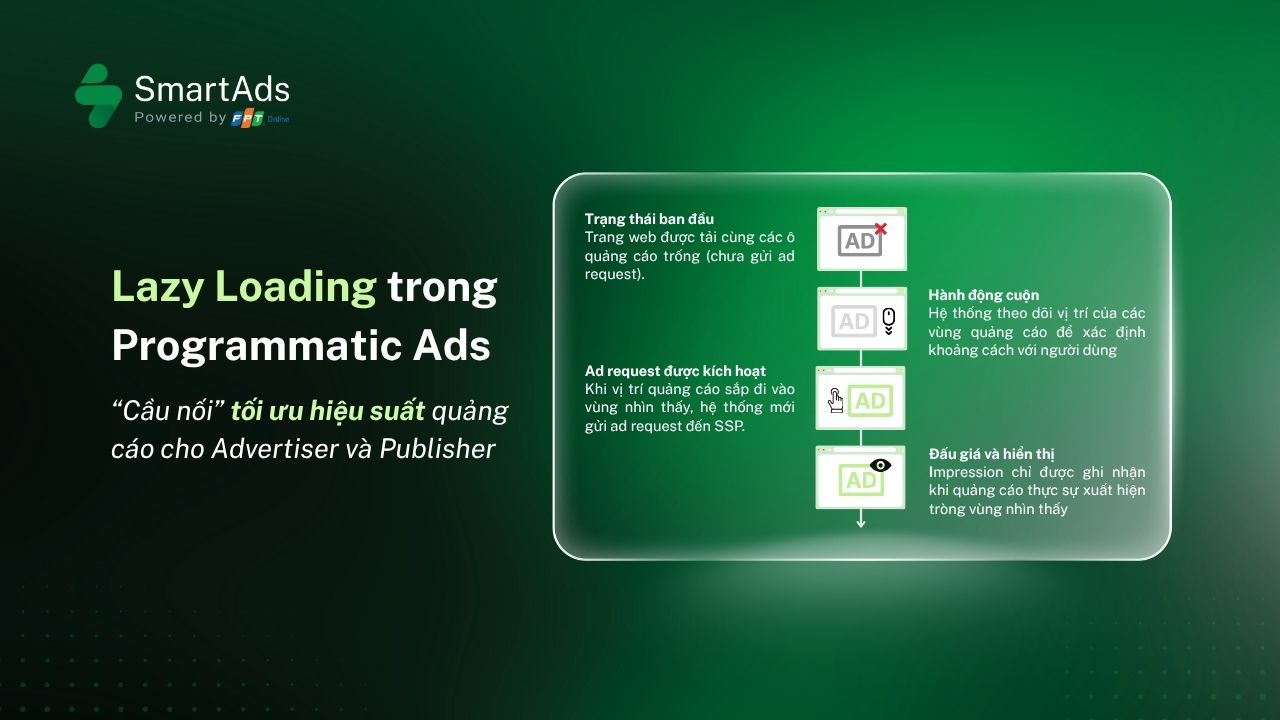I. What are Viewable Impressions and How are they calculated?
Viewability measures the percentage of ad impressions that are actually visible within the user’s screen. In programmatic advertising, viewability is especially critical since ads are automatically delivered across multiple publishers and placements. On some advertising platforms, Viewable impression is also known as True impression.
According to MRC (Media Rating Council) standards:
-
A display ad is considered viewable when at least 50% of its pixels are visible on screen for 1 continuous second.
-
A video ad is viewable when at least 50% of its pixels are visible for 2 continuous seconds.
Formula to calculate Viewability in programmatic advertising:
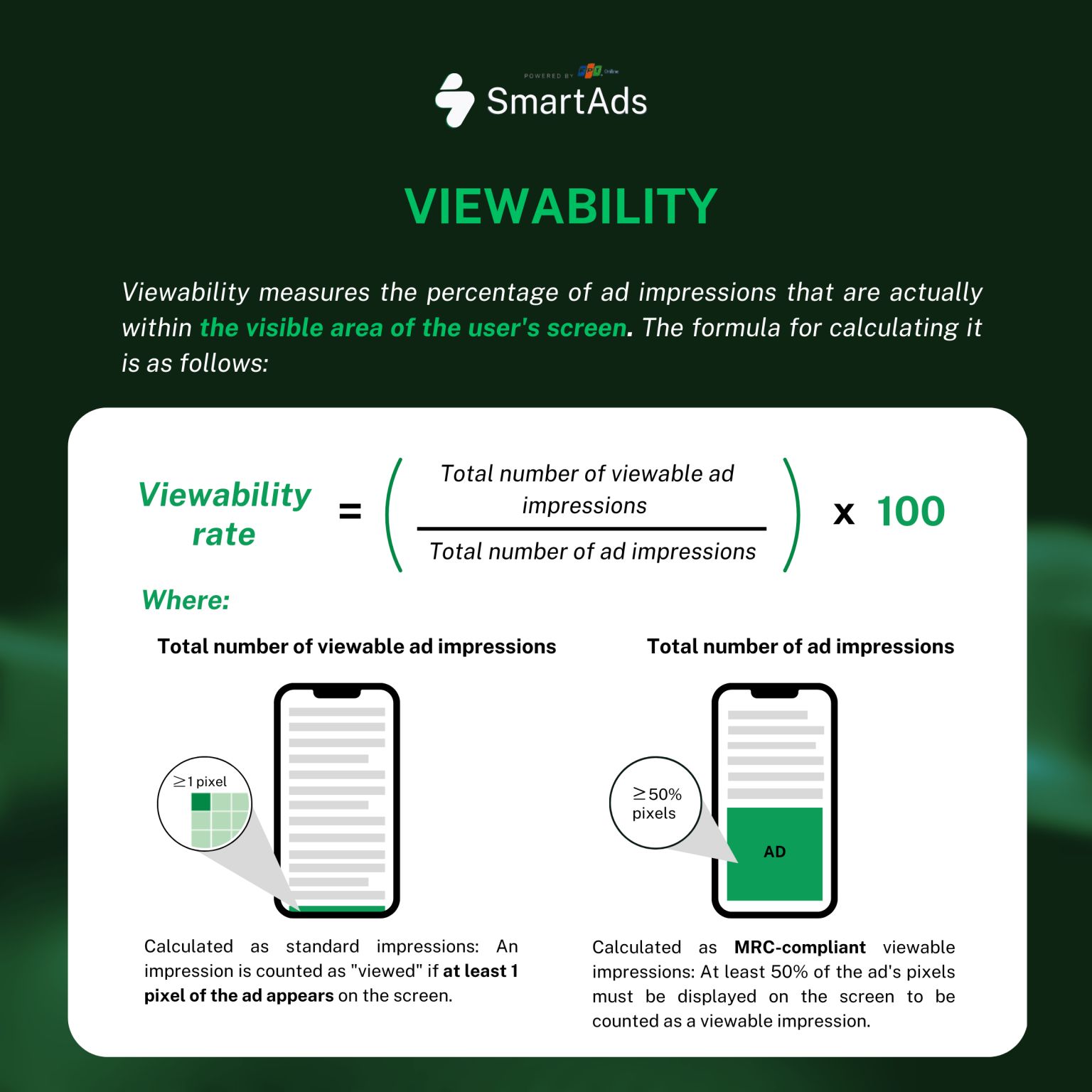
For programmatic advertising, viewability is calculated based on data collected from tracking and measurement technologies such as JavaScript tags or SDKs. The simple formula to calculate viewability rate is: Viewability Rate = (Total Viewable Impressions / Total Impressions) × 100%
While:
-
Total Viewable Impressions: number of impressions meeting MRC standards (≥50% of ad pixels in view).
-
Total Impressions: total served impressions, even if only 1 pixel is technically displayed.
Example: If an ad is served 1,000 times but only 600 meet MRC standards, the viewability rate = 60%.
II. Advantages of Viewable Impressions in Programmatic Advertising
1. Optimized Ad Budget
By paying only for impressions that are actually viewed, businesses can save significant costs and focus on high-performing placements.
2. Increased Credibility
Ensures ads not only appear but also genuinely reach the target audience.
3. Fraud Prevention (Click Fraud)
Viewability measurement reduces invalid impressions and bot activity, enhancing transparency and campaign effectiveness.
III. How to Improve Ad Viewability
1. Loading Speed
This is a crucial factor in improving ad viewability. Slow-loading ads often cause users to abandon the page before the ad even appears. If the loading speed is fast, the ad will be displayed before users scroll away or leave the website.
Some techniques to improve ad loading speed include:
-
Minimize passbacks: This technique reduces the number of ad calls to multiple servers, helping ads load faster.
-
Asynchronous loading: Allows ads to load independently from other page elements, so they don’t need to wait until the entire page finishes loading.
-
Optimize assets (images, videos, etc.): Compress file size and reduce pixels to shorten loading time.
-
Remove unnecessary tracking codes or files: This decreases the browser’s resource load and reduces HTTP requests, allowing the website to render main content faster and ensure timely ad display.
2. Ad Length
According to IAB (Interactive Advertising Bureau) standards, a static banner ad is considered viewable if at least 50% of its pixels are visible in the viewport for a minimum of 1 second, and 2 seconds for video ads.
Longer videos may face challenges in maintaining ad viewability, as users can scroll past or exit the page before the minimum viewing time is reached. These standards ensure that the ad duration is appropriate, not only improving visibility but also increasing the chance that users will actually pay attention to the message.
3. High-Quality Content
High-quality ad content is a key factor in attracting and retaining users. According to IAB standards, ad content should ensure relevance, creativity, and value for the audience.
Delivering engaging ads with meaningful and relevant messages not only increases interaction rates but also significantly improves conversion rates. Using language tailored to the target audience, combined with high-quality visuals and videos, makes display ads more compelling and effective in capturing attention.
4. Ad Layout and Size
The layout and size of ads play a crucial role in capturing user attention. According to IAB standards, ad sizes such as 300x250, 728x90, or 300x600 typically achieve higher ad viewability rates.
Effective ad layout requires careful design and placement in positions such as above the fold (ATF) or below the fold (BTF), ensuring that key information is clearly displayed and easy to read. By following these standards, advertisers not only improve visibility but also enhance the overall user experience, ultimately boosting advertising performance.
Conclusion
The Viewability wave is reshaping how advertisers measure and optimize effectiveness, shifting focus toward interactions that truly matter.
At SmartAds, with advanced viewability tracking technology, advertisers only pay for impressions that genuinely add value. At the same time, SmartAds eliminates risks from click fraud, helping businesses save budget and achieve optimal ROI.

